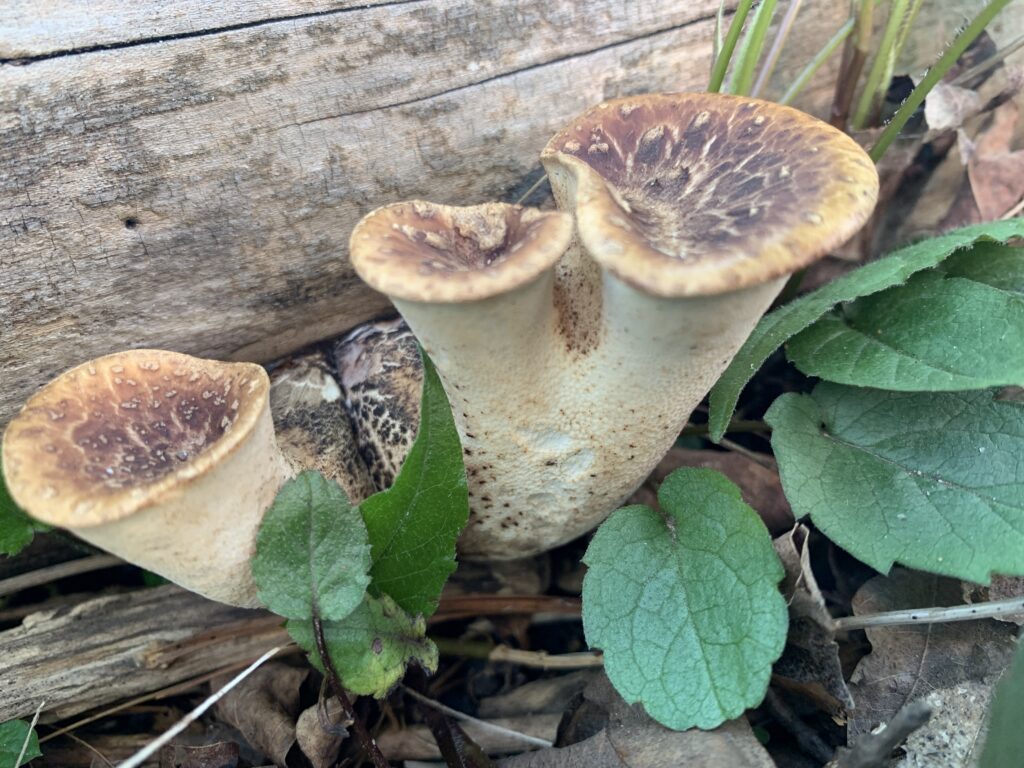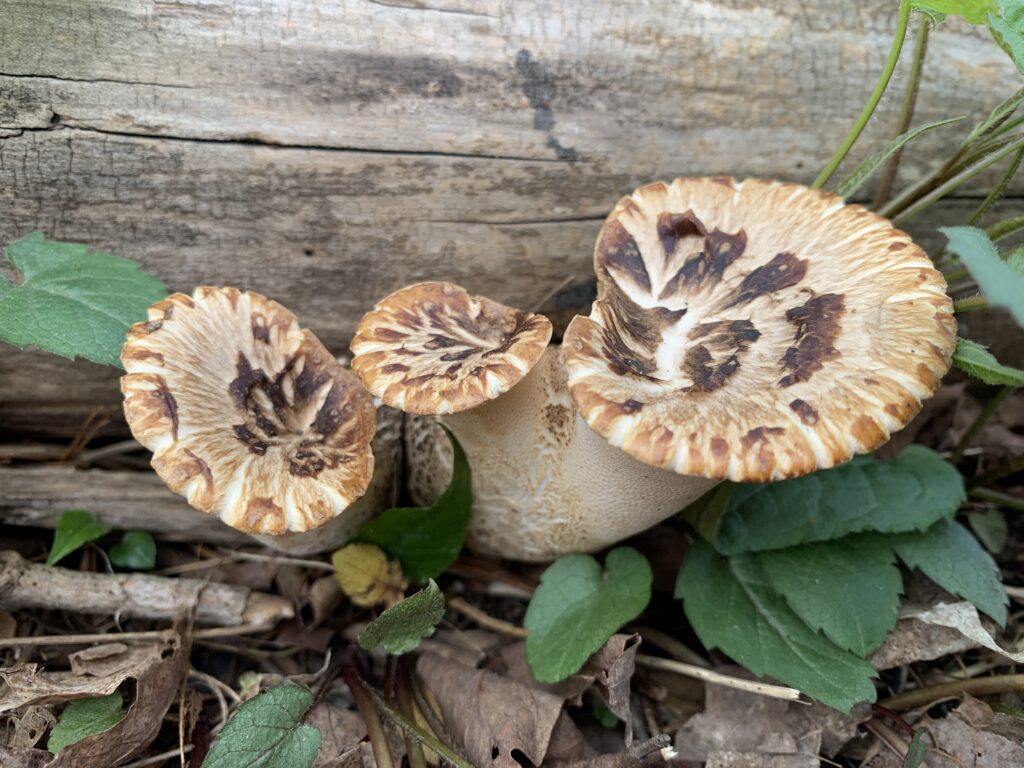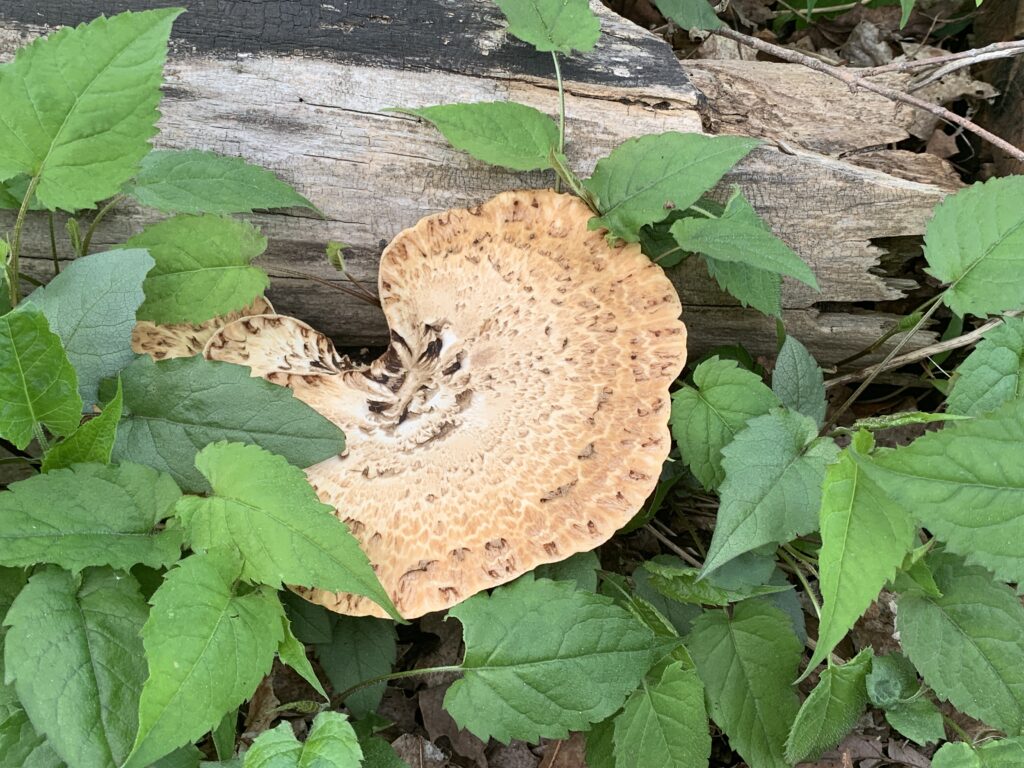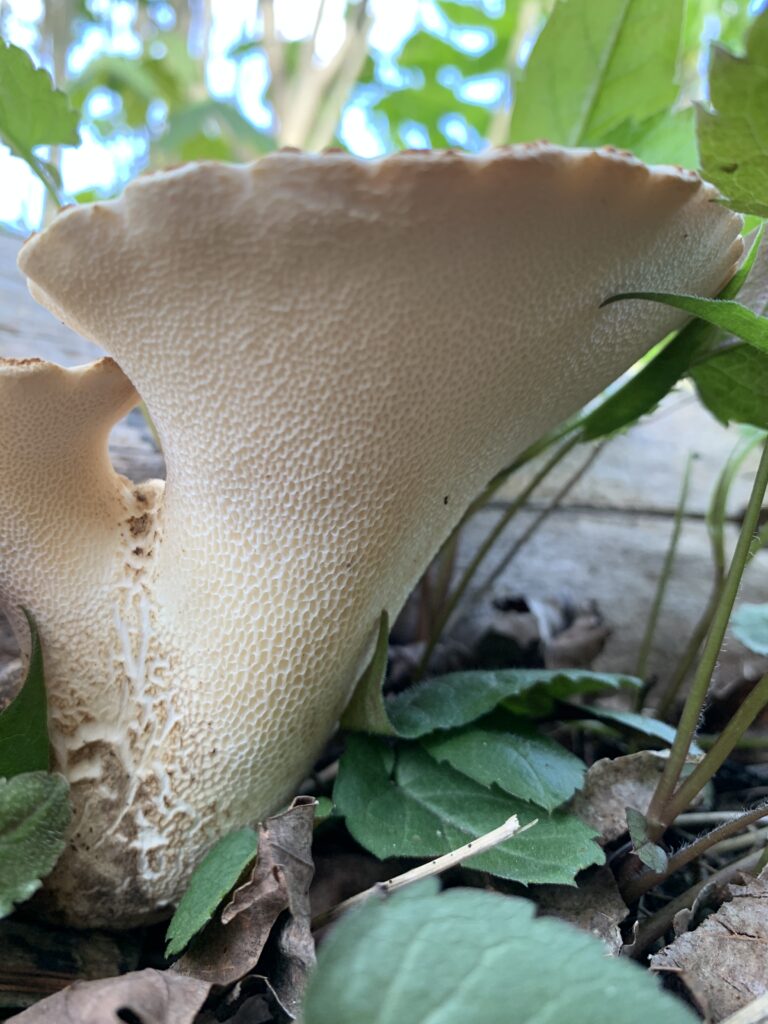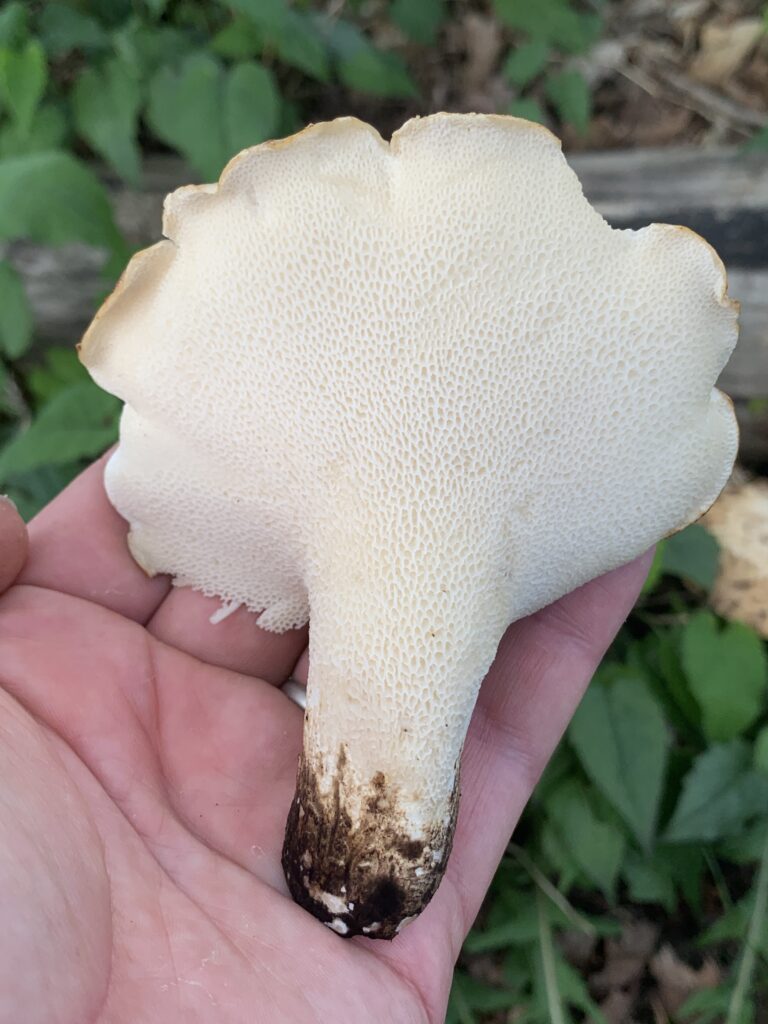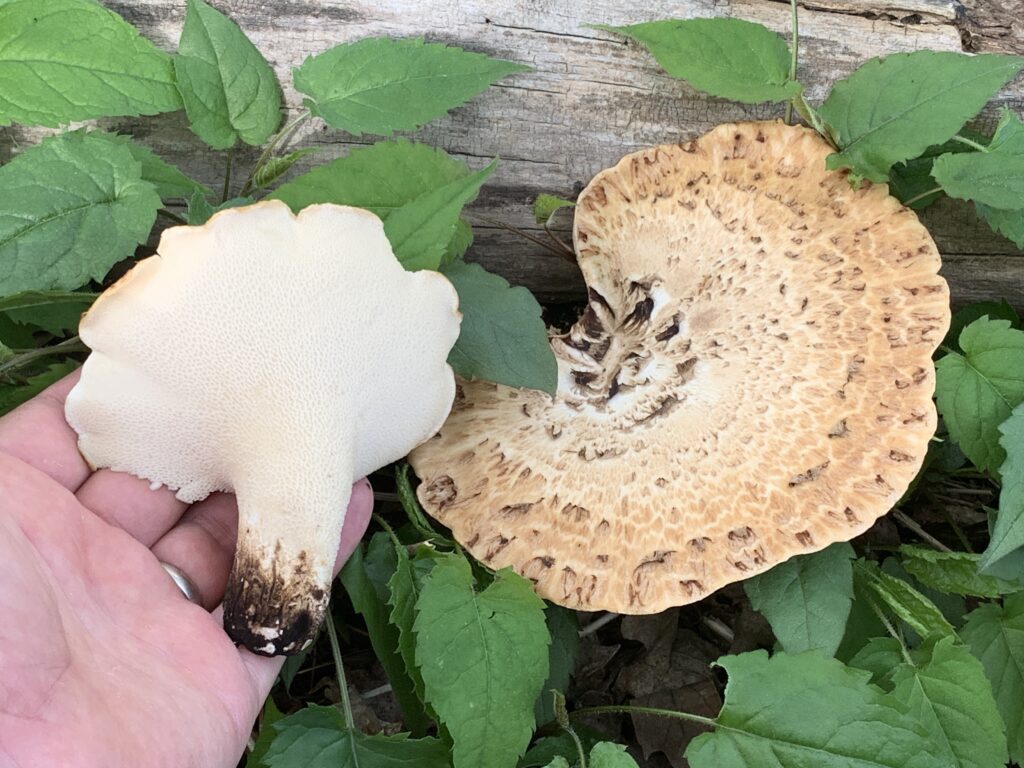| Ecology & Habitat | Saprotrophic, Singly, or in Clusters of overlapping caps. This mushroom can be found growing on dead or dying wood in various environments. It is commonly found on Elm, Ash and Beech, but will grow on other hardwoods as well. |
| Edibility, Taste & Odor | Edible, and easy to identify. But, not a choice edible. |
| Cap | The cap is brown with scales and bruises brown. |
| Pores | Pore surface white to cream, bruising brownish. |
| Spores | White. |
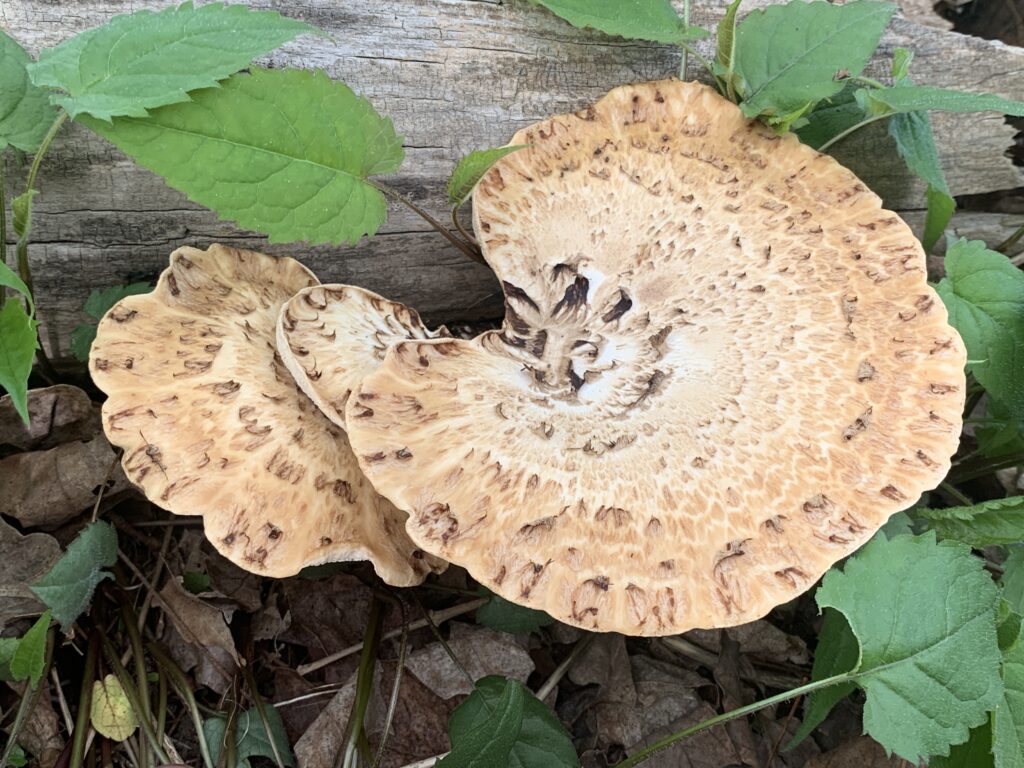
This polypore is an edible spring time mushroom. It’s not considered a choice edible, but it’s really not so bad either. As they age, they become more stiff and difficult to chew. So, maybe it’s reputation is based on people eating it at the wrong time. It is best when it is very young. However, when it’s older you can still trim off the softer leading edge if the cap margin. As long as it’s feels soft and dough like, and it’s not past it’s prime, it will be good to eat. They grow on dead wood, most commonly on Elm, Ash and Beech, but can be found on other hardwoods as well. They have a tan or brown colored cap with darker brown scales. The scales are more prominent when young and are quite distinct. In some regions it is called the “Hawk Wing” fungus because the dark scales and coloring resembles the brown feathers of a hawk. The pore surface is spongey, white, and bruises brown. The short stem is usually tan or light brown, with a coarse texture, and very stiff. The stem will also develop a black foot where they attach to the wood once they are full grown.
